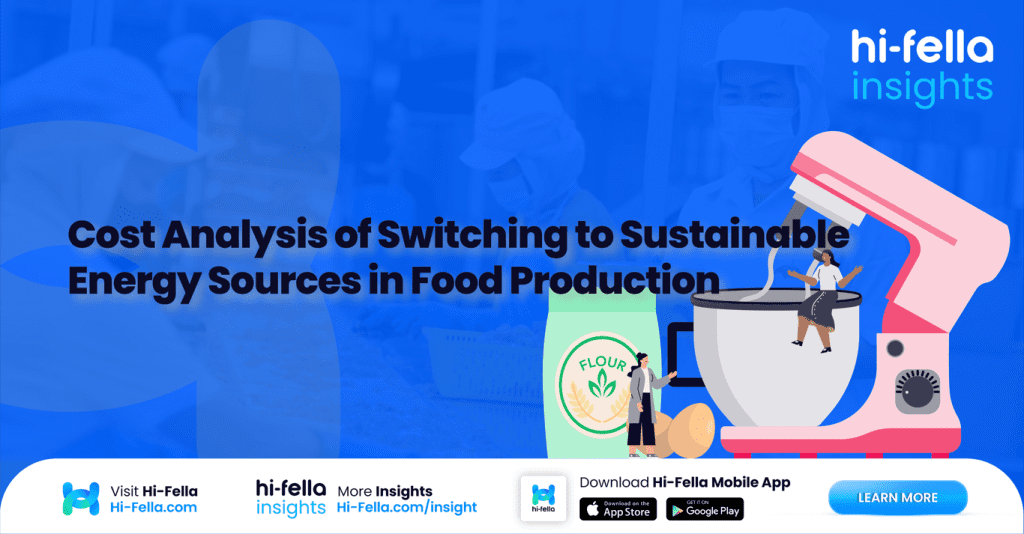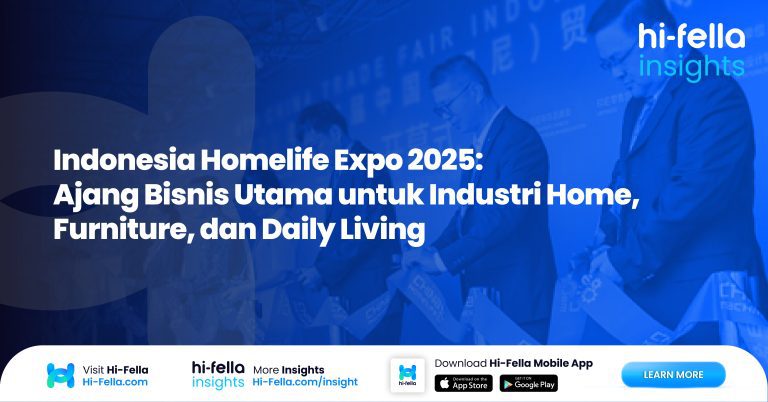Sustainability is no longer just a buzzword in food production—it’s a strategic imperative. As energy prices fluctuate and environmental regulations tighten, more food manufacturers are considering a transition to sustainable energy sources like solar, biomass, wind, and biogas. But the one question that often holds decision-makers back is this: What does it actually cost to switch?
Making the leap from fossil fuels to green energy isn’t just about saving the planet—it’s about long-term cost control, supply chain resilience, and market competitiveness. Let’s break down the real costs, benefits, and economic considerations that come with integrating sustainable energy into food manufacturing operations.
Understanding the Energy Profile of Food Production
Food production is energy-intensive—think of the electricity needed for refrigeration, the thermal energy for cooking and pasteurisation, and the fuel used for processing lines and packaging. These energy demands vary depending on your segment (dairy, frozen foods, baked goods, etc.), but in general, energy costs can account for 10–25% of operating expenses in a typical food manufacturing facility.
Traditionally, most of this energy has been drawn from grid electricity and fossil fuels—both of which are subject to price volatility and carbon emissions. As a result, companies are under pressure—from governments, retailers, and increasingly climate-conscious consumers—to reduce their carbon footprint and improve energy efficiency.
This is where sustainable energy alternatives come into play. But switching isn’t just about ethics—it’s an investment decision. And like any investment, it needs a solid cost-benefit analysis.
The Upfront Capital Costs: Barrier or Opportunity?
Let’s start with the elephant in the room: capex. Transitioning to sustainable energy typically requires a significant upfront investment. For example:
- Installing solar panels for a medium-sized plant may cost $200,000–$500,000, depending on capacity and storage requirements.
- A biomass boiler system to replace gas heating could run upwards of $300,000, including installation and feedstock preparation.
- Wind turbine integration is site-specific but can climb well over $1 million for large-scale applications.
These numbers might sound daunting, but context matters. Most renewable systems come with long asset lives (15–30 years) and very low operational costs once installed. That’s the key difference: while traditional energy sources carry ongoing fuel expenses, sustainable systems front-load the cost and generate long-term savings.
Governments in many regions also offer subsidies, tax credits, and feed-in tariffs that significantly offset initial investment. And in export-oriented markets, going green can open doors to eco-sensitive buyers and ESG-compliant retailers, which turns your sustainability strategy into a market access strategy.
Operating Costs and Payback Periods
Sustainable energy investments typically come with a high initial capital outlay, but the long-term operating economics tend to favour the business, especially in energy-intensive sectors like food processing. Once these systems are up and running, they offer predictable, low-cost energy that stabilises overheads and shields the company from grid price volatility or fuel shocks.
Let’s break down how that plays out with a few core systems:
Solar Energy: Low Maintenance, High Savings
For many food manufacturers, solar PV (photovoltaic) systems are the entry point into sustainable energy. Installation costs vary by country and system size, but once in place, solar arrays require minimal maintenance—mostly panel cleaning and inverter checks. With proper setup, a facility can see electricity bill reductions of 40% to 80%, depending on how much energy is offset from the grid.
This is especially beneficial in regions with unstable grid supply or peak hour tariffs. Even without battery storage, solar can power daytime operations, reducing the strain on diesel gensets or high-cost electricity during midday demand surges.
In financial terms, solar investments tend to offer steady returns, particularly when subsidies, tax incentives, or feed-in tariffs are available. In countries like India, Malaysia, and South Africa, many mid-sized factories hit payback in 4 to 6 years, after which electricity becomes virtually free for another 15–20 years.
Biomass: Turning Agricultural Waste into Heat and Power
Biomass systems are especially relevant in food-producing regions that generate agricultural by-products—rice husk, sugarcane bagasse, coconut shells, palm fibre, etc. Instead of sending these residues to landfills or burning them inefficiently, they can be converted into thermal energy or electricity through combustion or gasification.
When sourced locally, biomass fuel can be significantly cheaper per BTU than fossil fuels like diesel or LPG. This is a game-changer for processes that rely heavily on heat—like roasting, drying, steaming, or pasteurisation.
The operating costs of biomass systems are mostly tied to fuel logistics and system maintenance, but they can often be offset by partnerships with nearby farms or plantations that provide consistent supply. For facilities with high thermal loads (e.g., coffee processors, flour mills, breweries), payback can be reached in 3–5 years, particularly when carbon credits or rural electrification grants are factored in.
Hybrid Systems: Resilience and Load Balancing
For operations with 24/7 requirements—like cold storage warehouses, dairy chillers, or seafood processors—hybrid systems offer the best of both worlds. Combining solar with thermal energy storage or biogas-driven generators allows businesses to smooth out demand spikes, reduce reliance on unstable grids, and avoid costly peak hour charges.
These systems cost more upfront but offer greater resilience and cost control. Biogas, for instance, can be generated on-site from food waste, manure, or wastewater, further closing the sustainability loop while generating usable energy.
While the payback period for hybrid systems is typically 5–7 years, they provide ongoing benefits in the form of grid independence, uninterrupted operations, and in some cases, the ability to sell surplus energy back to the grid under net metering policies.
The Tipping Point: Breakeven and Beyond
Once the breakeven point is reached—whether at year four, five, or seven—your facility essentially generates energy at near-zero marginal cost. That means:
- No rising fuel bills
- No surprise electricity surcharges
- No dependency on imported fossil fuels
- No sudden capex to meet ESG benchmarks
This shift transforms your entire cost structure. You go from managing energy as a volatile expense to using it as a competitive advantage. Over a 20-year system lifespan, the total savings can reach into the hundreds of thousands, even millions, depending on production scale and energy demand.
Maintenance and Infrastructure Considerations
It’s easy to overlook the hidden cost advantages of sustainable energy systems. While fossil-fuel-based systems require regular fuel procurement, combustion control, and emissions compliance, renewables offer simplified maintenance and lower risk exposure.
Solar panels, for instance, have no moving parts and require only periodic cleaning and inverter checks. Biomass and biogas systems are more hands-on but can be managed efficiently with trained local teams or third-party service contracts.
There’s also the issue of energy security. Fossil fuel supply chains are vulnerable to geopolitical events, currency shocks, and international shipping delays. Sustainable systems, especially those powered by on-site or local resources, provide energy independence—a major strategic advantage for food businesses looking to stabilise costs in a volatile global environment.
Environmental and Brand ROI
There’s a less tangible, but still very real, return on investment when it comes to sustainability: brand equity. Food buyers—especially large retailers and international distributors—are increasingly applying ESG filters when selecting suppliers.
Certifications like ISO 14001, CarbonNeutral, or RE100 not only enhance your brand credibility but also unlock procurement opportunities with major hospitality chains, supermarket groups, and foodservice providers.
For exporters, being able to say “Our factory is powered by 100% renewable energy” or “We use carbon-neutral processing” can mean the difference between securing a premium buyer or being passed over. That’s not fluff—it’s market economics in action.
Choosing the Right Sustainable Energy Mix
Not every energy source is right for every facility. Choosing the right sustainable solution depends on:
- Your energy demand profile (base load vs. peak load)
- Geographical conditions (solar radiation, wind patterns, biomass availability)
- Regulatory environment (incentives, interconnection rules, feed-in tariffs)
- Land and infrastructure (roof space, waste handling capacity, grid access)
In some cases, a hybrid system—say solar plus biomass for thermal needs—offers the best balance of reliability and ROI. In others, working with an energy service company (ESCO) on a power purchase agreement (PPA) can allow you to adopt renewables without upfront capex, paying a fixed rate over time.
The smartest strategy is one rooted in energy audits, demand forecasting, and life cycle costing. That’s how you make the numbers work—not just for the environment, but for your business model.
Making It Happen: Why Platforms Like hi-fella Matter
Switching to sustainable energy isn’t just a facilities decision—it’s a business strategy. And when you’re exporting, exhibiting, or scaling internationally, it becomes a reputation and compliance decision, too.
That’s where hi-fella comes in. As an export-import platform and exhibitions partner, hi-fella connects food producers with buyers who value traceable, sustainable, and innovation-driven products. It also links businesses to the tools, partners, and insights they need to build greener, leaner, and more competitive supply chains.
From showcasing at global expos to sourcing sustainability-certified inputs, hi-fella is built for food companies that want to lead—not just follow—in the global shift toward cleaner energy and smarter trade.
Energy Isn’t Just a Utility—It’s a Competitive Advantage
In food production, energy isn’t just an overhead line in your budget—it’s a strategic lever. Switching to sustainable sources isn’t always easy, and it’s not always cheap upfront. But when done right, it transforms your cost base, sharpens your resilience, and elevates your brand in a crowded market.
So don’t just think of sustainability as an environmental checkbox. Think of it as a business upgrade. And when you’re ready to trade that upgrade for market growth, global reach, and long-term ROI—hi-fella is here to help power the journey.








